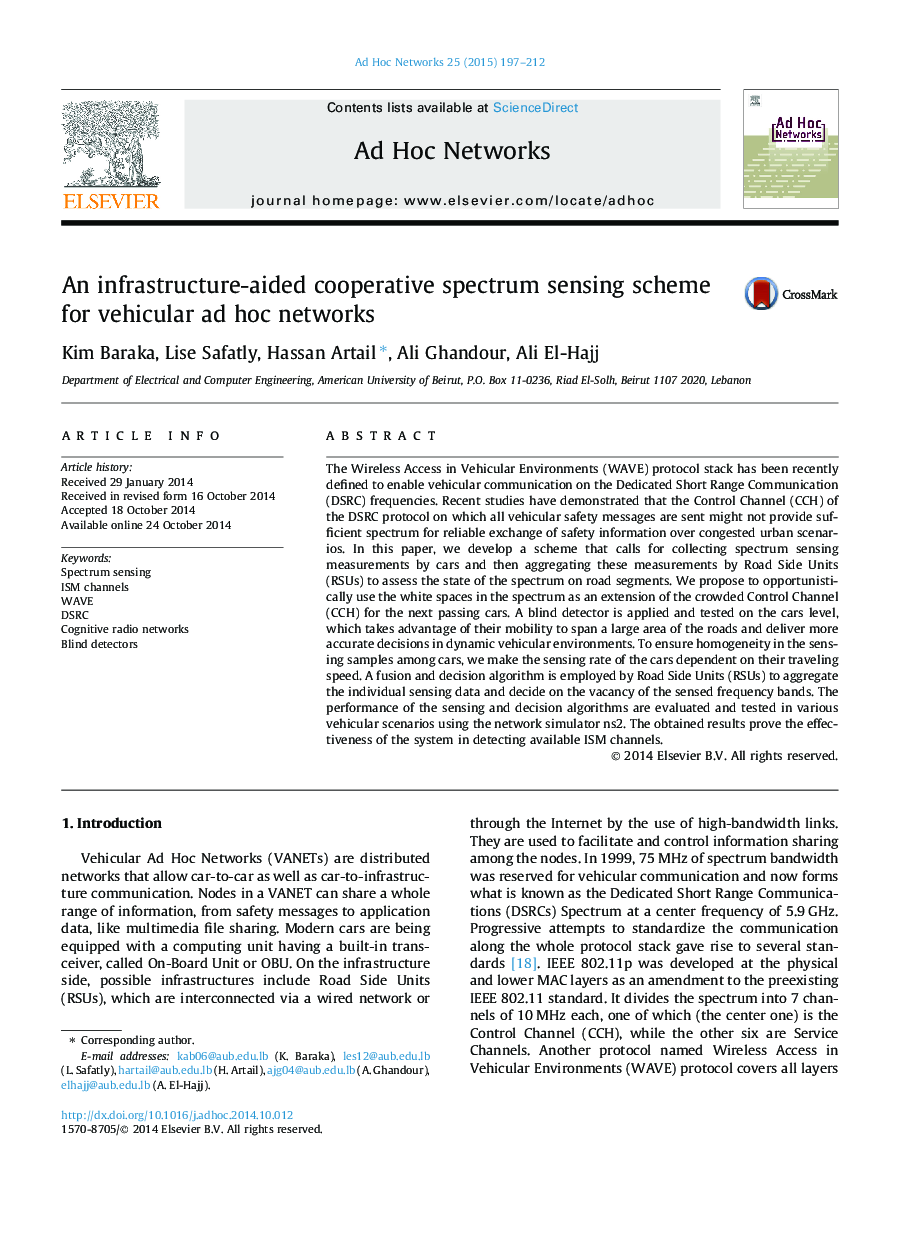| Article ID | Journal | Published Year | Pages | File Type |
|---|---|---|---|---|
| 445400 | Ad Hoc Networks | 2015 | 16 Pages |
The Wireless Access in Vehicular Environments (WAVE) protocol stack has been recently defined to enable vehicular communication on the Dedicated Short Range Communication (DSRC) frequencies. Recent studies have demonstrated that the Control Channel (CCH) of the DSRC protocol on which all vehicular safety messages are sent might not provide sufficient spectrum for reliable exchange of safety information over congested urban scenarios. In this paper, we develop a scheme that calls for collecting spectrum sensing measurements by cars and then aggregating these measurements by Road Side Units (RSUs) to assess the state of the spectrum on road segments. We propose to opportunistically use the white spaces in the spectrum as an extension of the crowded Control Channel (CCH) for the next passing cars. A blind detector is applied and tested on the cars level, which takes advantage of their mobility to span a large area of the roads and deliver more accurate decisions in dynamic vehicular environments. To ensure homogeneity in the sensing samples among cars, we make the sensing rate of the cars dependent on their traveling speed. A fusion and decision algorithm is employed by Road Side Units (RSUs) to aggregate the individual sensing data and decide on the vacancy of the sensed frequency bands. The performance of the sensing and decision algorithms are evaluated and tested in various vehicular scenarios using the network simulator ns2. The obtained results prove the effectiveness of the system in detecting available ISM channels.
